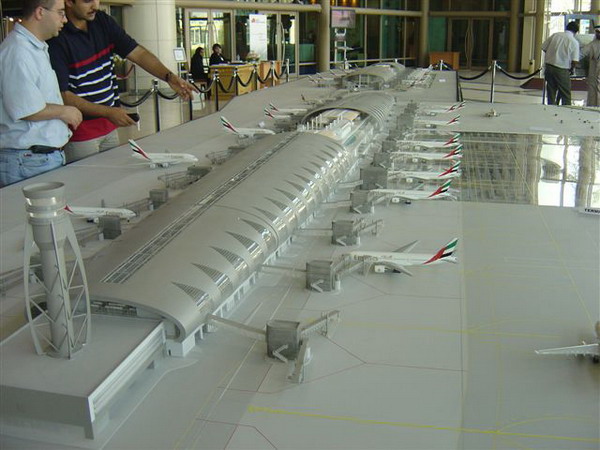Hambantota International Airport, Sri Lanka
Hambantota International Airport, Sri Lanka
The Sri Lankan Government, discovering the immense potential for development in the southern part of the country, decided to build an international airport. Named after its province, Hambantota International Airport (HIA) is expected to serve five million passengers by 2028. The new airport would act as a catalyst in economic and tourism growth in the country.
The first phase of construction at the airport site started in November 2009. China Harbour Engineering (CHEC) is the construction contractor for the airport, while the Airport Authority of Sri Lanka (AASL) will operate the airport. The Chinese Government is extending its financial assistance for the project.
Construction details of HIA
The airport is being constructed in two phases. Phase 1, which includes the passenger and cargo terminal, runway and taxiway, apron, and aerodynamic facility, is being developed on 800ha of the 2,000ha allocated land and is expected to be operational by the end of 2012 or in early 2013.
Phase 2 includes the construction of an aviation school, a parallel taxiway, and recreational facilities such as an airport hotel.
Hambantota International Airport features
The airport will feature a 20,000m² passenger terminal, a cargo terminal with an area 10,000m² and a 35m-tall air traffic control tower. The passenger terminal will have an area of 12,000m2 and a capacity to handle one million passengers per annum. It will have ten international check-in counters, two domestic check-in counters, two contact gates and two passenger boarding gates. Future stage 2 extensions will further add 26 international check-in counters, eight domestic check-in counters, and 28 passenger boarding gates to the terminal.
Hambantota International Airport design
The design theme is aimed at creating an eco-friendly airport. Care was taken so as to ensure that no ecological and environmental imbalances would arise during the construction of the airport, while the existing environmental conditions in the neighbourhood will remain undisturbed.
The design of buildings and the airport infrastructure is planned to immingle with the environment. One quarter of energy consumption is planned to be sourced from natural renewable energy. Existing water bodies will be preserved and new water bodies will be developed to maintain the ecological balance.
Benefits of the Hambantota International Airport project
Hambantota International Airport is set to provide an alternate air transport link to Sri Lanka. Its opening will avoid the traffic congestion at Bandaranaike International Airport(BIA) by diverting some traffic.
The Hambantota and Monaragala regions are economically developing with a great scope for growth. Construction of an airport near these regions will uplift the economic and business activities. Direct and indirect employment opportunities will be created for the people around the airport, which in turn will help ease the poverty in the region.
Hambantota International Airport is also expected to flourish the tourism and infrastructure of the country and encourage people to migrate to its surroundings. It will be an ideal location for aviation and aviation maintenance industries due to the abundant availability of land at a low cost.
The surrounding neighbourhood is a large agricultural zone and the cargo facility in the airport will help to enhance the export capacities of the country and increase the economic activity.
Hambantota International financing
The Government of Sri Lanka (GOSL) and Airport Authority of Sri Lanka (AASL) are financing the project. Additionally a Chinese firm is funding $210m for the project.
Hambantota International runways
The airport has a single runway (05/23), which is 3,500m long and 60m wide, that can handle larger aircraft such as the A-380. Construction of the runway was completed in July 2011. Two taxiways, TWY A and TWY B, will also be constructed.
Hambantota International parking
The airport is provided with two open-air parking lots, while car parking in the terminal building has 400 spaces. A remote parking area situated at a distance of 300m from the terminal building offers parking at cheaper prices.
Main Product
- 2491X to BS 6004 Cables
- 450/750V PVC Insulated, Non-sheathed Cables (single core)
- Cables for Open-door Button
- 450/750V PVC Insulated, PVC Sheathed Open-door Button Cables (2 core)
- Power Supply Cables
- 450/750V PVC Insulated, PVC Sheathed Power Cables (2 core & 3 core)
- Speaker Cables
- 450/750V PVC Insulated, PVC Sheathed Speaker Cables (4 core)
- Cables for Electric Lock
- 450/750V PVC Insulated, PVC Sheathed Electric 电磁锁线 (4 core)
- Controlling Cables
- 450/750V PVC Insulated, PVC Sheathed Controlling Cables (2 core & 6 core)
- 450/750V PVC Insulated, PVC Sheathed, Screened Controlling Cables (2 core)
- Reader Cables
- 450/750V PVC Insulated, PVC Sheathed, Screened Reader Cables (6 core)
- Voice Cables
- 450/750V PVC Insulated, PVC Sheathed, Screened Voice Cables (2 core)
- Signaling Cables
- 450/750V PVC Insulated, PVC Sheathed, Screened Signaling Cables (2 core & 3 core)
- Push Button Signalling Cables
- 450/750V PVC Insulated, PVC Sheathed, Screened Signaling Cables (2 core)
- Video Cables
- RG59 B/U
- Backbone Coaxial Cables
- RG 6/U
- Coaxial Cables
- RG-6 Quad
- Twisted Pair Cables
- 450/750V PVC Insulated, PVC Sheathed, Screened Cables (1 pair)
- Trunk Speaker Cables
- 300/500V PVC Insulated, PVC Sheathed Controlling Cables (1 Pair)
- Ambient Noise Sensors Cables
- 300/500V PVC Insulated, PVC Sheathed, Screened Cables (1 Pair)
- Outdoor Broadcasting Cables<
- 300/500V PVC Insulated, PE Sheathed Waterproof Cables (1 Pair)
- Volume Control Switch Cables
- 300/500V PVC Insulated, PVC Sheathed Controlling Cables (4 core)

